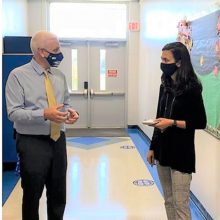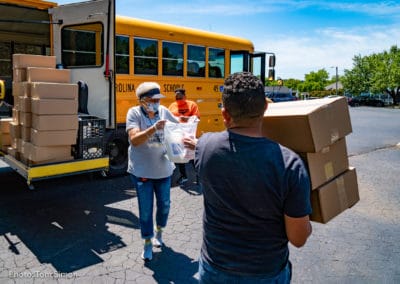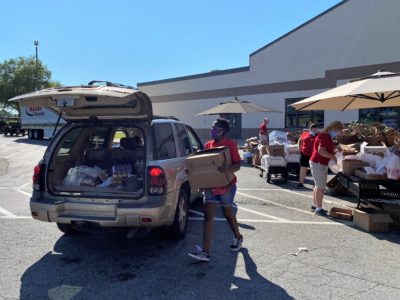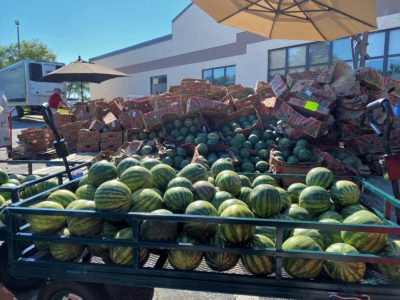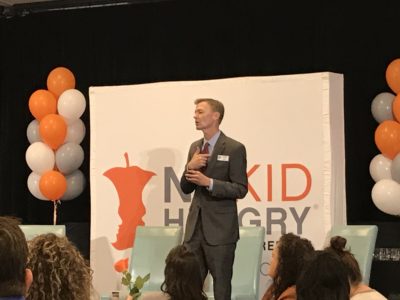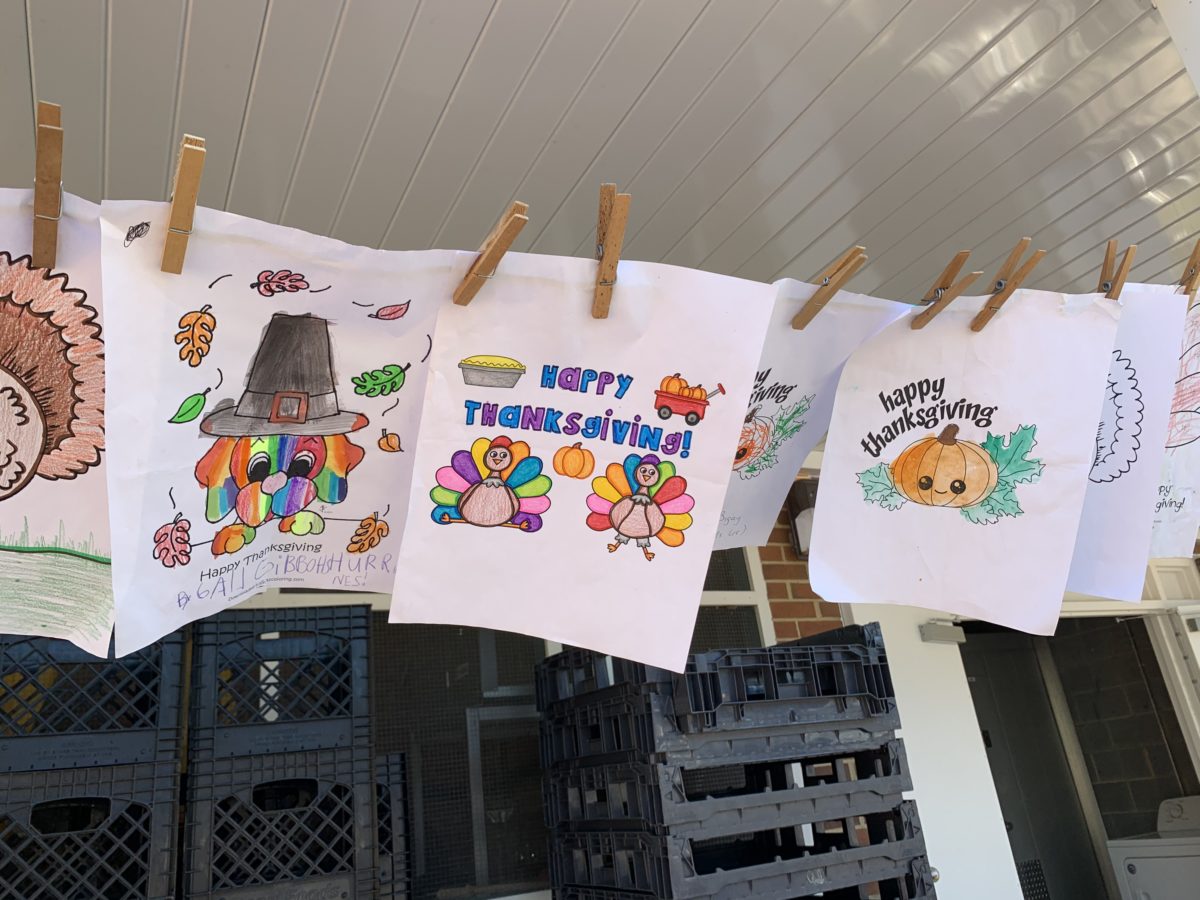

Just as mashed potatoes and macaroni and cheese will serve as comfort foods to many this week, school meals continue to be a comfort to students during a school year unlike any other.
In Cumberland County Schools, Beth Maynard, the executive director of child nutrition, views school meals as more than just food. For her, they serve to nourish students’ physical, social, and emotional health.
“If you’re talking about treating the whole child, it’s not just their bellies and their minds — they’re starved for that face-to-face and social interaction,” said Maynard.
That’s why Maynard and her team are offering multiple ways for families to receive free school meals and launching engagement efforts to increase participation amid the COVID-19 pandemic.
“I believe it represents a sense of a normal school day, that they’re getting a piece of it at home,” said Maynard. “I don’t think a school lunch represents as much the meal as it does the ladies and gentlemen in the cafeteria that care so much about them and interact with them as they come through the line.”
Curbside pick-up, delivery, and meal bundles
In March, Gov. Roy Cooper announced the closing of school buildings on a Saturday. By Tuesday, the child nutrition team in Cumberland County was offering curbside pick-up of ready-to-eat meals every weekday. They later added school buses which deliver meals to high-poverty neighborhoods across the county. Those meals are also delivered Monday-Friday.
Then, in an effort to provide even more access to school meals, the district added curbside pickup of meal bundles in October. They contain five days worth of breakfast and lunch, an idea Maynard modeled after Charlotte-Mecklenburg Schools.
An order form goes out to parents each week, and the bundles are picked up every Tuesday. Many of the items are delivered frozen and require simple preparation. This option was added to serve parents whose schedules don’t allow them to pick up meals on a daily basis. And it seems to have worked– Maynard said the meal bundles expanded participation in school meals by about 25%.
She heard from one parent who brought a meal bundle home and watched as her two children discussed what was in the box and what their favorite items were. They reminisced on eating school lunch in the cafeteria.
“That’s evidence that kids actually do like their school lunches, it’s just become culture to assume that they don’t,” said Maynard. “That’s refreshing to hear when you’ve been doing this for eight months.”
Backyard picnics, golden tickets, and more
Cumberland County Schools is currently operating under plan C, or fully remote instruction. And without students in school buildings, participation in school meals has dropped significantly. Right now, the district is serving about half the breakfasts and a third of the lunches in a day than it did before the pandemic.
So Maynard and her team have launched a variety of engagement efforts to drive up participation and feed more students. “Our purpose is to really bring some normalcy to the kids who are stuck at home, only seeing their teacher and their classmates virtually,” said Maynard.
Another goal of the promotional events is to encourage parents to bring their children along with them during curbside pickup so that students get to see the cafeteria staff and vice versa.
“It’s rejuvenating on both sides. They miss the kids, and the kids miss them. They’re able to see each other, still socially distanced, and be face-to-face instead of virtual,” she said.
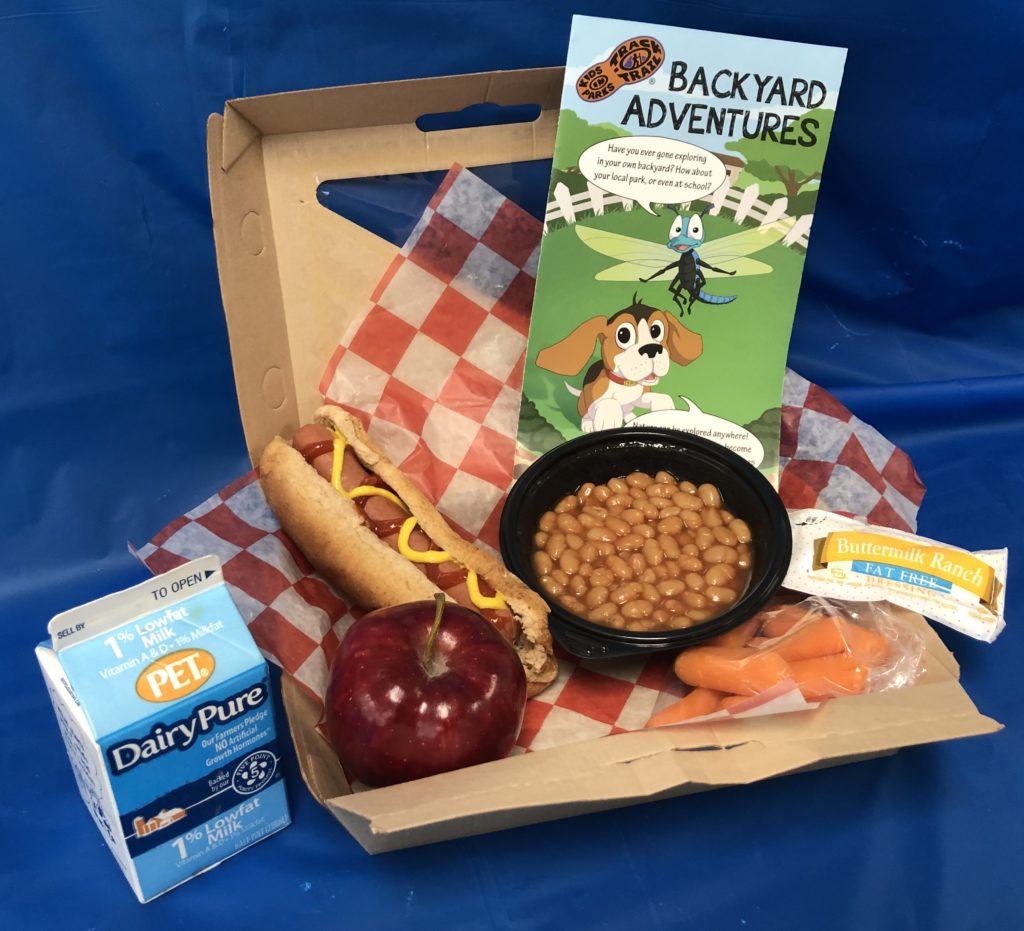

This fall, there was a backyard school lunch complete with a backyard adventure. The nutrition department handed out an educational brochure from the Blue Ridge Parkway Foundation that provided activities for students to complete in their backyards, like identifying different trees and bugs. To fit the theme, cafeteria staff served a picnic-style lunch, decorated the curbside pick-up lines with grills and campfires, and dressed up as butterflies and ladybugs. If students brought back their completed brochure, they received a toy to play with outside.
“You’re mixing school meals with an educational activity that encourages you to get up, get away from the computer, and move,” said Maynard. “They go together — school meals and education.”
For National School Lunch Week in October, the theme was Willy Wonka and the School Lunch Factory. Students created movie posters about what school lunch meant to them, and the district posted them in an online art gallery. Cafeteria staff hid golden tickets in students’ lunch bags. If they found one and brought it back on Friday, they received carbonated fruit juice and a bag of popcorn. Staff even dressed up as oompa loompas and Willy Wonka.
“The parents posted all these messages online about how much fun their kids had doing it. Even the middle school kids really liked it,” said Maynard.
These activities are also beneficial for the cafeteria staff. Maynard said seeing the kids in the curbside line reminds her team of why they do what they do.
“What they’re doing is kind of hard. They’re out there in all sorts of weather. So it’s an opportunity for them to have fun while they get to engage the kids,” she said.


Staff dress up as Willy Wonka for a National School Lunch Week theme. Courtesy of Cumberland County Schools 
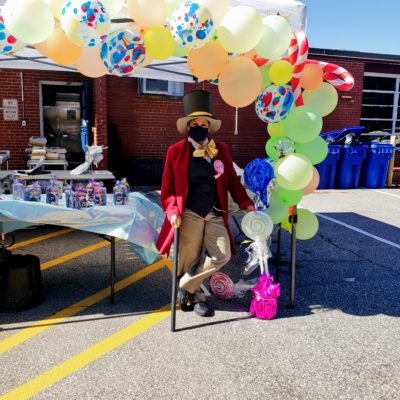
Staff dress up as Willy Wonka for a National School Lunch Week theme. Courtesy of Cumberland County Schools
Looking ahead
This fall, the U.S. Department of Agriculture (USDA) extended waivers that allow school meals to be served for free to all children ages 18 and under through June 2021. That means even children that aren’t enrolled in the district, such as younger siblings, can pick up free school meals. Maynard said that has helped the program stay alive.
But it isn’t enough. Operating at its current level — which is about half volume — is not financially sustainable. To generate revenue, school nutrition departments rely on reimbursements from the USDA. Fewer meals served means fewer reimbursements and less revenue, while expenses remain largely the same.
Right now, Maynard said funding from the General Assembly’s COVID-19 relief package, which allocated $75 million from the federal CARES Act to the Department of Public Instruction for school nutrition services, is keeping the program afloat. However, that funding ends in December.
“It concerns me as to how we’re going to financially maintain. You just can’t keep losing money month after month,” said Maynard, adding that the child nutrition department is about $300,000 short of being able to meet expenses on a monthly basis.
Earlier this month, Cumberland County Schools voted for students to come back to classrooms under plan B in January, which is a blended model of face-to-face instruction and virtual learning.
“I’m hopeful that bringing the kids back into the building will help fill that participation gap that will keep us financially stable, but that’s contingent on the metrics from the COVID data supporting that,” she said.
In the meantime, Maynard and her team will continue serving children in every way they can. That includes offering an especially popular meal for the Thanksgiving holiday — it includes turkey, dressing, gravy, green beans, and cobbler.
“It’s comfort food. And I do think the kids are very much comforted by their school meals,” she said.
